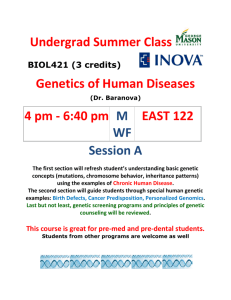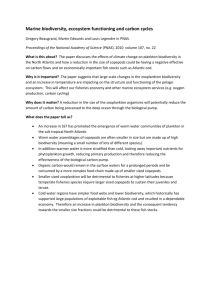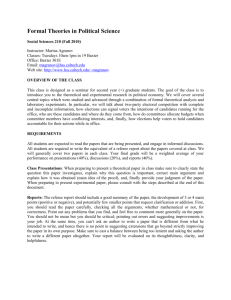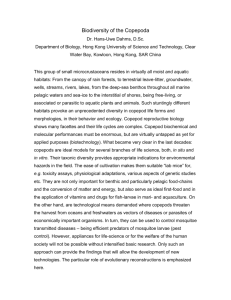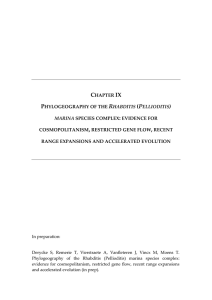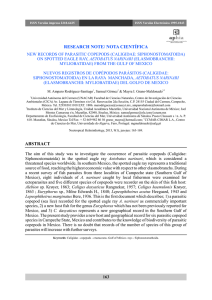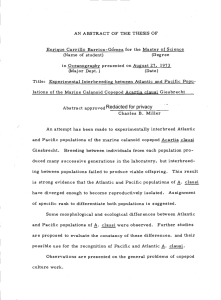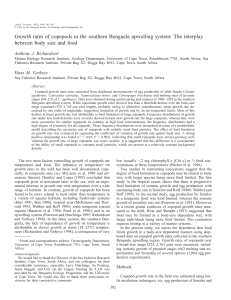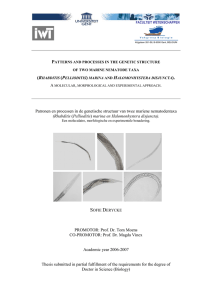Euchaeta marina Calanoida) in the eastern subtropical and tropical Atlantic Ocean
advertisement
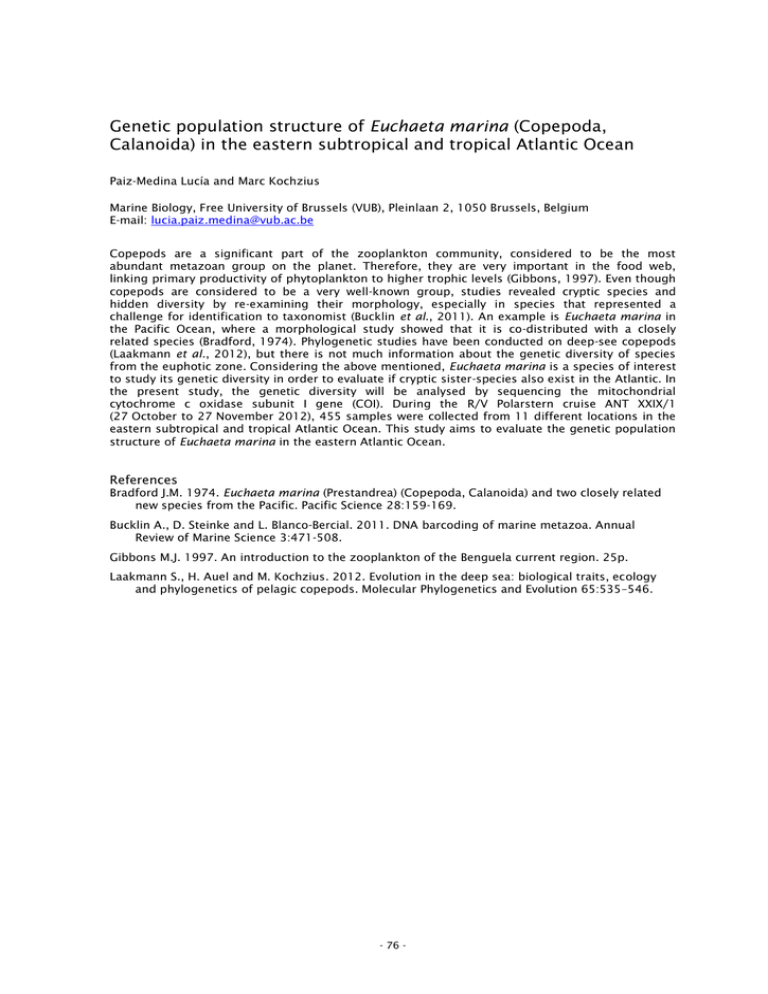
Genetic population structure of Euchaeta marina (Copepoda, Calanoida) in the eastern subtropical and tropical Atlantic Ocean Paiz-Medina Lucía and Marc Kochzius Marine Biology, Free University of Brussels (VUB), Pleinlaan 2, 1050 Brussels, Belgium E-mail: lucia.paiz.medina@vub.ac.be Copepods are a significant part of the zooplankton community, considered to be the most abundant metazoan group on the planet. Therefore, they are very important in the food web, linking primary productivity of phytoplankton to higher trophic levels (Gibbons, 1997). Even though copepods are considered to be a very well-known group, studies revealed cryptic species and hidden diversity by re-examining their morphology, especially in species that represented a challenge for identification to taxonomist (Bucklin et al., 2011). An example is Euchaeta marina in the Pacific Ocean, where a morphological study showed that it is co-distributed with a closely related species (Bradford, 1974). Phylogenetic studies have been conducted on deep-see copepods (Laakmann et al., 2012), but there is not much information about the genetic diversity of species from the euphotic zone. Considering the above mentioned, Euchaeta marina is a species of interest to study its genetic diversity in order to evaluate if cryptic sister-species also exist in the Atlantic. In the present study, the genetic diversity will be analysed by sequencing the mitochondrial cytochrome c oxidase subunit I gene (COI). During the R/V Polarstern cruise ANT XXIX/1 (27 October to 27 November 2012), 455 samples were collected from 11 different locations in the eastern subtropical and tropical Atlantic Ocean. This study aims to evaluate the genetic population structure of Euchaeta marina in the eastern Atlantic Ocean. References Bradford J.M. 1974. Euchaeta marina (Prestandrea) (Copepoda, Calanoida) and two closely related new species from the Pacific. Pacific Science 28:159-169. Bucklin A., D. Steinke and L. Blanco-Bercial. 2011. DNA barcoding of marine metazoa. Annual Review of Marine Science 3:471-508. Gibbons M.J. 1997. An introduction to the zooplankton of the Benguela current region. 25p. Laakmann S., H. Auel and M. Kochzius. 2012. Evolution in the deep sea: biological traits, ecology and phylogenetics of pelagic copepods. Molecular Phylogenetics and Evolution 65:535–546. - 76 -

